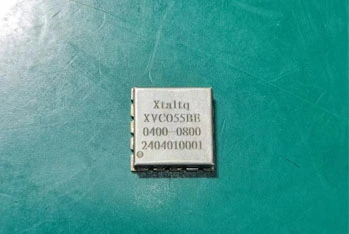A Voltage-Controlled Oscillator (VCO) is an electronic oscillator whose frequency is determined by an input control voltage. Widely used in communication systems, signal generators, and phase-locked loops, VCOs offer tunable frequency outputs, making them essential for applications requiring dynamic frequency adjustment and precise signal modulation. XtalTQ stands out among oscillator manufacturers, offering a wide range of high-precision oscillators.
Component Selection: The choice of reactive components such as capacitors, inductors, and varactors (voltage-variable capacitors) plays a crucial role. These components define the natural resonant frequency of the oscillator circuit. By varying the control voltage, the capacitance or inductance changes, thereby altering the oscillation frequency.
Control Voltage Range: The range of the input control voltage directly impacts the frequency range. A broader control voltage range allows for a wider frequency tuning range, while a narrower range limits the frequency span.
Circuit Design: The specific architecture of the VCO, whether it is a Colpitts, Hartley, or LC-tank oscillator, also influences the frequency range. Different designs offer varying degrees of frequency stability and tuning capabilities.
Temperature Compensation: Temperature variations can affect the frequency stability of a VCO. Incorporating temperature-compensating components can help maintain a consistent frequency range across different operating conditions.
Quality of Components: High-quality components with low tolerances and minimal parasitic elements contribute to a more stable and predictable frequency range.
A Voltage-Controlled Oscillator (VCO) operates by converting an input control voltage into an oscillating signal with a frequency that varies proportionally to the voltage. The core mechanism involves a resonant circuit, typically composed of inductors and capacitors, whose natural frequency can be adjusted.
Control Voltage Application: The input control voltage is applied to a varactor diode or a similar voltage-sensitive component within the resonant circuit. This component’s capacitance changes with the applied voltage.
Frequency Adjustment: As the capacitance varies, it alters the resonant frequency of the circuit. Higher control voltages generally decrease the capacitance, increasing the frequency, while lower voltages increase the capacitance, decreasing the frequency.
Oscillation Generation: The VCO circuit, often an LC-tank or a Colpitts oscillator, generates an oscillating signal at the adjusted resonant frequency. This signal is then output for use in various applications.
Feedback Mechanism: Some VCOs incorporate feedback loops to stabilize and maintain the desired frequency, ensuring consistent performance.
This ability to dynamically adjust frequency makes VCOs essential in applications like communication systems, signal generators, and phase-locked loops.
A PLL is a feedback control system that locks the phase of an output signal to a reference signal. It uses a VCO to generate the output signal, adjusting the control voltage to match the phase and frequency of the reference signal.
The performance of a VCO can be affected by temperature variations, power supply stability, load impedance, and the quality of the control voltage. These factors can influence the frequency stability and phase noise of the VCO.
 English
English français
français Deutsch
Deutsch Español
Español русский
русский



